 Leading Blog | Posts by Month |
 Leading Blog | Posts by Month |
06.30.18

LeadershipNow 140: June 2018 Compilation
See more on
Posted by Michael McKinney at 07:17 AM
06.29.18

Born to Build
A All of us are to one degree or another. We are born to build. Building something gives us meaning and purpose. For some though, it is a need that drives them every day. Building is a high-degree-of-difficulty task, but natural builders want the impossible assignment. They actually prefer the messiness, the problems, the barriers, the absence of supervision, the improvisation and the rush of a new customer breakthrough. You can build something on your own or from within an existing organization. But builders know how to create demand for their ideas. In Born to Build, Jim Clifton and Sangeeta Badal of Gallup—the people who brought you StrengthsFinder—have turned their attention to entrepreneurs and ambitions, self-motivated people that want to build something. They take a psychological approach to the subject to understand builders—who they are, what motivates them, and how they do it. With the Builder Profile 10 assessment included with the book, you can find out if you are a builder and what part you are likely to play. The skills and the mindset of a builder will help you no matter what career path you choose. Successful builders proactively develop behaviors that empower them to anticipate problems, overcome adversity, recognize opportunities, organize resources and take action to build something. Gallup has determined that there are three key players or roles in the development of an organization: The Rainmaker, the Conductor, and the Expert. When all three are present in an organization or a team, the likelihood of it breaking out and booming grows exponentially. It is rare that any one person is all three. So the idea is to find partners or create a team early on that will complement your type of builder. The Rainmaker: Aggressive, optimistic, risk-tolerant, Rainmakers measure success by profitability. They are self-confident and incredibly persuasive. They know how to energize and influence customers and employees with their vision of the future. A venture almost never works without this player. (38 years ago when I started my manufacturing business, I wish I would have brought a Rainmaker on board a lot sooner. We would have reached our goals much faster.) The Conductor: They possess great management talent and mainly focus on the operations of the venture. They know how to get everyone working together and take pride in finding the right people for key positions. They build the venture by building its people. Hard work energizes them. The Expert: Primarily focused on product development and research, Experts set a high bar and believe that being the best in your field is the organization's crucial distinction. Highly independent, discerning and quick-thinking, Experts never accept the status quo and constantly imagine new possibilities. They are part artist and part scientist. The mindset of a builder incorporates four keys to building: Creating Self-Awareness, Recognizing Opportunities, Activating on Ideas, and Building a Team. Creating self-awareness and building a team is where this book and its assessment really come into play. Through study and research Gallup came up with a list of 10 talents that influence the behaviors and explain the success of a builder. Every builder uses a mix of these 10 talents:
Your unique mix of talents will determine your role in the venture—Rainmaker, Conductor or Expert. Your dominate talents help to determine your building journey. “The way you are wired will influence not only what you build, but also how you build it. Your talents are the lens you use to look at the world. They guide how you frame problems and the solutions you generate for those problems, what you see as roadblocks and the methods you use to clear them, how you identify your goals and aspirations, and the route you take to fulfilling them.” Importantly, once you understand the way you are wired, you will see what kind of people you need to complement your talents in order to successfully create your vision of the future and build your venture. Although it’s a romantic thought, we never do it alone. 
Posted by Michael McKinney at 07:57 AM
06.27.18

Unsafe Thinking: How to Get Out of Your Rut
W “The ability to meet challenges with a willingness to depart from standard operating procedures; to confront anxiety, tolerate criticism, take intelligent risks, and refute conventional wisdom—especially one’s own views—in order to achieve breakthroughs” is what Jonah Sachs calls unsafe thinking. Feeling anxious is not a bad place to be in. Unsafe thinking means becoming comfortable with being uncomfortable. We’ve all heard the warnings. In changing environments, tried-and-true routines often lead to mediocrity. And we know this is true. Worse still, when we are in the midst of a problem or crisis, we easily revert to the same old thinking with the hopes that we’ll think it through better next time when we are under less pressure. But that never happens. So how do we get out of it? In Unsafe Thinking: How to Be Nimble and Bold When You Need It Most, Jonah Sachs walks us through six key components of unsafe thinking and practices that will help us to overcome our reluctance to use them. First up is courage. 1. Courage In 2015, shortly before Amazon bought Whole Foods, co-CEO John Mackey was faced with a plummeting stock price and was under fire. He told an audience that, “Staying open, knowing something new is trying to birth itself is hard when everyone’s screaming at you.” It’s hard to stay open to new ideas and expand your thinking when the stakes are so high. He added, “You want to run to safety, but there’s no safety in business these days.” Sachs says we need to accept anxiety as part of the journey and reimagine fear as fuel for creativity. “When you feel fear, remind yourself that it might indicate that you’re on the edge of a creative breakthrough.” 2. Motivation How do you motivate yourself and others to stay on the edge? The motivation must come from within. Intrinsic motivation is more powerful than extrinsic motivation. In fact, if we focus too much on extrinsic motivation, it can kill our creativity and performance. “Research shows that when we’re in the creative phase of seeking out problems to solve or brainstorming solutions, the phases that call for the open mode, it’s best not to distract ourselves from intrinsic enjoyment with extrinsic rewards.” Getting ourselves in the right frame of mind means knowing what success looks like, getting regular feedback to see that we are on track, and having the skills necessary to complete the task. 3. Learning Do we rely on or question our expertise? How can we build our expertise without getting trapped by it? Sigmund Freud wrote, “The conceptions I have summarized here I first put forward only tentatively, but in the course of time they have won such a hold over me that I can no longer think in any other way.” And so it goes. We must become explorers. “The more we project an air of expertise, the more often we’re wrong and the slower we are to learn. And though we may fear nobody will follow us if we admit to fallibility, research indicates that people prefer humble leaders.” The more urgent the problem, the more likely we are to seize upon an answer and stick with it without considering that we are on the wrong track. When faced with a deadline, John Cleese “would do all the selection and finalization of ideas at the latest possible hour, leaving as much time for exploration upfront as possible. It would give him a creative edge, and he would almost always come up with something more original. 4. Flexibility “Breakthroughs often come from pursuing ideas that seem counterintuitive to most people and therefore crackpot.” Our intuitions should not be ignored, but they aren’t truths. As Robin Hogarth says, “Emotions are data that need to be explained.” Sachs comments on Hogarth’s wicked learning environment that gives slow, ambiguous, or misleading feedback versus a kind learning environment that gives us plenty of timely, clear, and accurate feedback. “Spend a lot of time in a single environment, be it kind or wicked, and we’re likely to grow and become more confident in our intuition. But if our learning environments are wicked, our intuitions are likely to get further and further off base, even as they grow stronger.” 5. Morality When do you break the rules? Writer Wallace Stegner put it this way: “It is the beginning of wisdom when you recognize that the best you can do is choose which rules you want to live by. It’s persistent and aggravated imbecility to pretend you can live without any.” The idea is to disobey wisely or intelligent disobedience. Sachs says there are two things to keep in mind. “First, be open about dissatisfaction with creativity-killing rules. Colleagues and managers are more likely to see the quiet latent dissenter as disloyal and, surprisingly, as more verbally aggressive and argumentative. Next, it’s important to articulate the pro-social value of breaking a rule rather than the personal reason for doing so.” We reward sheep-like behavior, so we have to teach the unacceptability of blind obedience. What problem does this rule exist to solve? “While having a few rules that are meant to be broken can actually spur creativity, organizations should thoughtfully prune policies built up over time to address problems that may or may not still be relevant.” Again, this is not an argument against rules. Professor Scott Page noted that we easily get stuck when the group thinks the same way. “But if we have people with diverse tools, they’ll get stuck in different places. One person can do their best, and then someone else can come in and improve on it.” 6. Leadership The presence of other people can depress creativity. “Groups tend to enforce all the attitudes of safe thinking: they rush too quickly to consensus, rally around expert leaders, punish dissenters, quickly harden their shared sense of right and wrong, and unless directed otherwise, squash risky and unfamiliar ideas in the name of efficiency and practicality.” It’s up to the leadership to make sure people have a safe place to think in unsafe ways. Ask people what holds them back. 
Posted by Michael McKinney at 08:46 PM
06.19.18

Never Stop Learning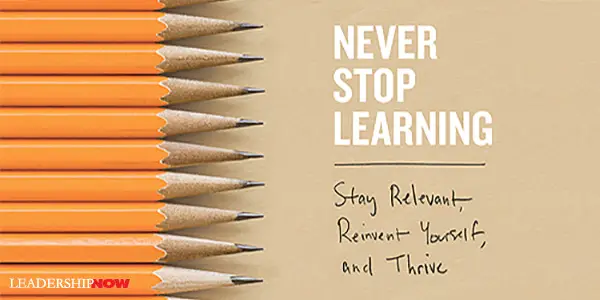
W We often think of learning as something we are doing all of the time. But we aren’t. Mostly we are repeating or reinforcing what we already know. And that gets in the way of learning. And when it comes to learning from mistakes we ignore, blame, and rationalize to protect our self-image. All of which, deprive us of the chance to learn. In Never Stop Learning published by Harvard Business Review Press, UNCC professor Bradley Staats provides the processes we need to follow to become perpetual learners. Like most things worthwhile learning must be deliberate. Learning is a process that requires your constant attention. Learning Requires Process Focus, Not Outcome Focus Learners focus on how they got to the result. For me, this was the key chapter. Process focus involves understanding all of the elements that contributed to the outcome. An outcome is not a single event. It is the result of many smaller events. We tend to place more emphasis on the outcome than we should. And perhaps more importantly, “we believe the outcome is a reflection of our finite ability and thus we judge it as an evaluation of ourselves—so we focus on performance goals rather than learning goals, to our detriment.” A focus on learning goals builds on a growth mindset. “To a growth mindset, the outcome is simply one input about the state of the process and the individual’s general learning.” And here’s another benefit of focusing on the process. Dancer and choreographer Martha Graham said, “Freedom to a dancer means discipline. That is what technique is for—liberation.” Staats adds, “Success, even in a novel situation such as dance, depends on understanding the building blocks. Once we understand the basics, we can deviate productively to innovate and learn.” Ask Questions We can’t learn if we think we have all of the answers. “When we ask questions, we fill in the blanks in our own knowledge.” Staats recommends we ask, “Is my approach correct?” Again this gets back to his point on having a process focus. We think our knowledge is more complete than it is and so we miss learning opportunities. Like the tortoise in Aesop’s fable, “we often need to slow down to go fast. Slow and steady, like the tortoise, can win the race when we ask thoughtful questions to help us learn. Rushing to answers when the world is changing around you is a shortsighted strategy at best. The answer that worked yesterday is unlikely to be correct tomorrow. Increasingly, we are tasked with activities that require judgment and expertise—not just mindless repetition of the same answer.” We don’t ask enough questions. Learning Requires Recharging and Reflection, Not Constant Action We always hear that we need to have an action bias. And that’s great in overcoming analysis paralysis and of course, results are the basis of our reputation. But doing for the sake of doing something is worse. Staats relates the example of the strategy of professional goalies when dealing with penalty kicks. Statistically they would be better off staying put in the center to stop the penalty kick. But they most often don’t. Researchers found that most often they don’t. “They wanted to be seen doing something, even if that something was wrong. Given that most tasks that require our attention involve uncertainty, it is inevitable that we will sometimes make the wrong choice…. This fear of making the wrong choice prevents us from pursuing strategies that could help us both now and in the long run.” I would add, who wants to be standing still and miss stopping the kick. We want to be seen as doing something even if statistically, moving might not be the best strategy. The false impression is that we aren’t trying. Being Yourself to Learn When we are ourselves, we will be “more positive, more motivated, and able to engage in more open learning.” Staats notes, “The challenge is to be authentic but not outlandish. The advice holds: you must release the individual if you want to learn. But as with many things, moderation is important. Overdoing it, as defined by the situation you’re in, will create problems for you and others.” Sometimes it’s wise to dial back the authentic you. Playing to Strengths, not fixating on Weaknesses Here’s the key: “Don’t try to fix irrelevant shortcomings. We learn best when we play to our strengths—those capabilities at which we excel.” We all have some critical weaknesses that need our attention. And those should be given our attention. Say no to the idea that any weakness must be treated as a learning need. Instead, focus on the key qualities that enable you to create value and differentiate yourself. And of course, we need to keep our strengths in check. As the Swiss-German philosopher wrote, “All substances are poisons; there is not which is not a poison. The right dose differentiates a poison from a remedy.” Specialization and Variety We can become boxed in by what we know. Only by intentionally expanding our knowledge and experience and including others can we make new connections. “When we become too specialized, we see what we want to believe rather than what is actually there. We think deep specialization is a way to learn, but it may constrain how we understand new material. Learning therefore, must incorporate variety as well as specialization.” Variety keeps us from running on autopilot. We think the world works a certain way. When we encounter new circumstances, “we fail to learn because we believe that the same od lessons apply.” A balance of specialization and variety is important though. “Moving across different domains may permit us to see connections, but only if our understanding is deep enough to recognize them.” Learning from Others The people we interact with are key to our success. Interestingly, Google found that “great team performance, learning, and innovation were less a function of individuals’ prior skills than of how the team members interacted and their previous experience with one another.” Staats has found that, “In isolation I may be able to come up with an interesting way to think about things, but the back-and-forth of having that idea challenged is what tests and thus improves me.” Determination When it comes to learning, it’s easy to get distracted by everything we need to get done. And our environment changes. But if we fail to learn wee become irrelevant. “We end up solving yesterday’s problems too late instead of tackling tomorrow’s problems before someone else does.” Microsoft’s CEO Satya Nadella said, “Ultimately, the ‘learn-it-all’ will always do better than the ‘know-it-all.’” Living in a learning economy means that we must all approach learning with four mindsets: focused (choose which topics to learn and focus on them deeply), fast (get up to speed quickly), frequent (always be open to learning even from the most unexpected places), and flexible (be able to decelerate and switch to the next opportunity). 
Posted by Michael McKinney at 06:08 PM
06.12.18

My Father’s Business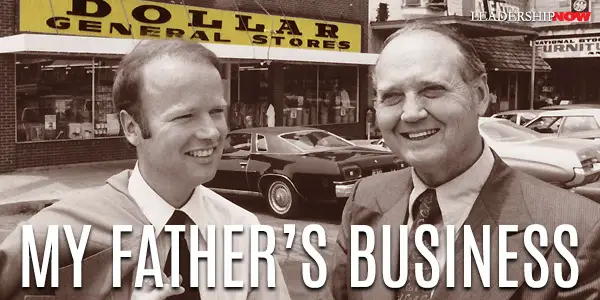
T In My Father’s Business: The Small-Town Values That Built Dollar General into a Billion-Dollar Company, Cal Turner, Jr. shares the ups and downs of running a family business for just over 37 years, and along with it some good down-to-earth common sense. Cal Jr, learned from his grandfather the value of listening. Because of a freak wrestling accident, his grandfather lost his Dad at age 11 and had to leave school to run the family farm. Finishing school with only a third-grade education might hold some people back, but not Luther Turner. He saw it as a plus. “He was convinced that everyone he met was smarter than he, and that he needed to learn something from each of them. He became a first-rate observer, a great listener, and a dedicated student to life. What he practiced was more than empathy. It involved valuing the other person and his or her information, insight, and perspective.”  His mother had a huge influence on him. She valued principles. She believed that “if you have a commitment to moral integrity, you don’t need a bunch of picky rules. They aren’t necessary; in fact, they become just so much baggage.” She also taught him to separate the problem from the person. She told him, “Son, for a good boy, you get into a lot of trouble.” Cal Jr. learned to focus on the solution and the lesson. When you separate the problem from the person, everybody can come together to learn from the solution. If we focus on labels and affixing blame, we are not going to be good at solving problems. His Dad also provided much-needed support. He would compliment him in front of others. Cal Jr. finds that “so much of success and failure lies in what we take away from our primary relationships.” A family grounded in love can survive almost anything. A solid value-based upbringing makes it easier to focus on others. “Leadership exists when an organization overcomes having a boss or a boss mentality. A boss only gets results; a leader gets development.… A true leader vests the authority in the organization.” The company was built with no strategic plan. When Cal Jr. introduced it he thought he might get resistance from Cal Sr. But Cal Sr. knew it was time to make changes, but responded with, “I hope you won’t create plan planners but will have plan doers.” Thinking strategically allowed them to reexamine the way they had always done things and take a good look and individual strengths and weaknesses. A better leader emerges when a person owns his or her own weakness and reaches out to make a connection with other people to help fill in the gaps. He has said that the doors of the executive suite tend to keep everybody out, but strategic planning opens the doors to bring everybody in. Running the business becomes a company-wide proposition. On teamwork, Cal Jr. says, “Collaboration, then, is the process of raising individual selfishness to group cooperation and accomplishment, which can spur the group—or the organization, the nation, or the planet—to greater success.” What they created was a values-based dynamic in the organization. “The least control for the most development of our niche.” Those values included: “We believe that productivity is attained by emphasizing strengths in a positive environment, not by dwelling on weaknesses in an environment of guilt and blame.” A secret to their success he refers to as “selective unscrewing.” “Our past has always been screwed up, and every year, we just selectively unscrew a bit.” Continual improvement. The concept of “unscrewing” has to do with change, and change is something most of us resist. It may be simple fear of the unknown, for we cling to the security of a predictable structure or pattern, although it’s worth remembering that people also get bored with the predictable. A forgotten value his Dad believed in, is the idea that “your dress reflects the respect you are showing the other person.” The title of the book—My Father’s Business—is a bit of a double entendre. While Cal Jr. spent a lifetime tending to his Dad’s business, he also believed it was his calling. At one time he wanted to go into the ministry. A preacher convinced him otherwise. He told him not to do it. “Find anything else you can do and do that, because only if there’s nothing else you can do are you truly called to be a preacher of the gospel of Jesus Christ. There are far too many preachers who were never called in the first place.” But then it came to him from a few lessons learned working with customers what God wanted him to do. “I could have much more effect on the lives of our customers day in and day out in our stores than I ever could as a preacher conducting three services a week.” He discovered His Father’s business in his life—a principle that guided him throughout the rest of his life. 
Posted by Michael McKinney at 11:35 PM
06.08.18

Reinforcements: How to Get People to Help You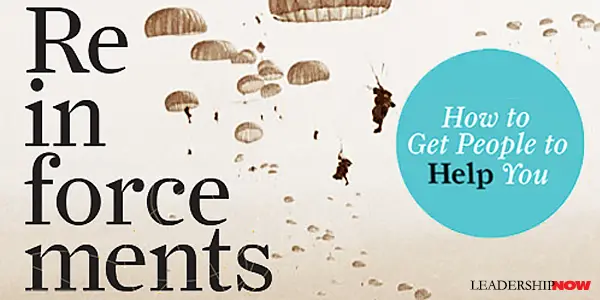
“I actually felt as if I was going to perish,” said psychologist Stanley Milgram upon asking a subway rider for their seat. Asking for help makes most of us uncomfortable and we often go to great lengths to avoid doing it. We fear rejection. We fear that people we think less of us. We believe people don’t really want to help. But the truth is we need the help and support of others to succeed. To be sure, leadership is fundamentally about asking people for help. “Reaching your fullest potential—professionally or personally—requires you to understand how to enlist reinforcements when you need them. For many of us, ‘when you need them’ is literally every day,” writes Heidi Grant in Reinforcements. Yet our reluctance to ask for help means we often don’t get the support or the resource we need. Making matters worse, our intuitions about what should make others more likely to help are often dead wrong; our fumbling, apologetic ways of asking for assistance generally make people feel far less likely to want to help. We hate imposing on people and then inadvertently, we make them feel imposed upon. We underestimate our chances of getting help, especially from those that have said “no” once already. We don’t like saying “no.” We don’t think less of people when they ask us for help. But for some reason, we forget that when it is our turn to ask for help. Research shows that people actually like us more when they have been able to help us. It makes them feel good too—unless they feel compelled to help. Asking someone, “Can you do me a favor?” increase the likelihood that they’ll say yes, but usually because they now feel trapped. So what are the subtle cues that motivate people to work for us? Grant says, first of all, don’t make it weird by overdoing it on empathy (i.e., ASPCA commercials), apologizing profusely (just ask), using disclaimers (“I normally wouldn’t…”), emphasizing how much the other person will love helping (“This will be fun!”), and reminding people that they owe you one, among other tactics. Instead try these three ways of asking others for help: In-Group Reinforcement Those members of our group are the most likely to help us. To create a sense of in-group among people, use the word “together,” create or highlight shared goals, identify a common enemy, share common emotions, experiences, and feelings. The Positive Identity Reinforcement Most people like to think of themselves as helpful because it is part of what it means to be a good person. We reinforce that with gratitude and appealing to the things that matter to them. “To maximize positive identity reinforcement, know your audience and emphasize what matters to them, not to you.” Gratitude is a glue that binds you and your benefactor together, allowing you to hit the same well over and over again when you need support, know that it won’t run dry. Also, “the more unique the help, the more closely tied it is to who they are.” If people feel that anyone could help you, it is more likely that they will pass thinking that someone else will help. They need not bother. “To activate the positive identity reinforcement, find ways to convey that the helper is in a unique position to help you.” “You’re my only hope.” The Effectiveness Reinforcement People want what they do to make an impact—to have meaning. If we feel we are not making an impact, we are likely to lose motivation. People need to clearly understand the impact of their helping. Research shows that when people are unable to get any kind of feedback about how well they are doing on a task, they quickly become disengaged from it. The question is, “How do I know what I am doing is important?” “How do I know that my time, money, or effort wouldn’t be better spent some other way?” Be clear up-front about what you want done and the impact it will have. And be sure to follow-up. Let them know how things turned out. As a leader, “helping people see the impact of their work—their help—is one of the most important motivators you can wield.” Reinforcements is written in an engaging way and is full of solid research to support the approach needed to get the help we need to succeed. It is practical advice for anyone asking for help in a way that will leave both parties feeling good about the relationship. 
Posted by Michael McKinney at 07:41 AM
06.06.18

Beyond the Drama Triangle
Y This triangle was developed as a social model years ago by Stephen Karpman, a student of Dr. Eric Berne, the father of Transactional Analysis. It maps out a type of dysfunctional interaction that is common in the workplace and in our homes as well. The word “dysfunctional” is nothing to be afraid of – it just means “not working very well.” Effective leaders notice when their relationships are working and when they aren’t … and as a result, they learn to stay out of the Drama Triangle. Karpman used this triangle to define three points that arise predictably in any dysfunctional real-life drama: the Persecutor, the Victim, and the Rescuer. Notice that all three of these are roles we can choose to play, or choose to step back from, at any time. So for instance, let’s assume that one of your team members promised you an update about an important project by Tuesday afternoon. It’s Wednesday morning. You don’t have the report yet. Here are three ways you could choose to respond:
Every time you see one of these roles emerge, or find yourself tempted to play one of them, you can be certain that the Drama Triangle is beckoning … and you’re about to get sucked into it. One classic pattern is: boss attacks (Persecutor), people defend themselves (Victim), other people come to their aid (Rescuer). Be honest. How often do you really want to do that? Here’s what’s important to notice: The Drama Triangle is a game. If you choose to play, you’ll be asking for an exchange that’s high on conflict and denial, and low on resourcefulness, self-awareness, and win/win outcomes. The problem is, it’s easy to play this game without even realizing that you’re playing and easy to become addicted to drama without realizing you’re addicted to it. A lot of the leaders we work with are shocked to learn that most of their workplace interactions fall within this dysfunctional triangle! The leader’s title typically means he or she is given the responsibility of judging or dictating … and that can be a slippery slope toward the Persecutor role. If you’re not careful, you can spend the majority of their working hours playing this game. It doesn’t have to be that way. The very first step to overcoming a drama addiction is simply to learn to recognize what’s happening. Start noticing that the Drama Triangle game typically begins with one person – it could be you – taking up the Persecutor or Victim role. If you sense a piece of communication coming from your side that is some variation on “It’s all your fault” or “Poor me,” step back, take a deep breath, and ask yourself if that’s really the only way you can express yourself. It’s possible you’ll come up with a better way of approaching the situation – one that doesn’t simply invite the other person to intensify the drama. For instance:
No blame. No drama. Just good communication! Your responsibility as a leader is to support your people, start good conversations, and make good outcomes possible. The Drama Triangle goes in the exact opposite direction of all three of those goals: it disempowers your team, starts lousy conversations, and makes terrible outcomes much more likely. If you spend even one minute a day in the Drama Triangle, that’s one minute too much. The only way to win this particular game to resolve not to play – and then stick with that decision!   Editor’s Note: The Road To Excellence asks the question, “What, exactly, stands between my company and organizational excellence—and what do I do about it?” David Mattson identifies 14 blind spots that have the potential to kill a business. The problem, of course, is seeing what you don’t know. The Excellence Process consists of six steps that when taken in order and made part of your culture will turn excellence into a process and help to get rid of your blind spots. Editor’s Note: The Road To Excellence asks the question, “What, exactly, stands between my company and organizational excellence—and what do I do about it?” David Mattson identifies 14 blind spots that have the potential to kill a business. The problem, of course, is seeing what you don’t know. The Excellence Process consists of six steps that when taken in order and made part of your culture will turn excellence into a process and help to get rid of your blind spots.

Posted by Michael McKinney at 09:03 AM
06.04.18

Talent Wins: The New Playbook for Putting People First
I Ram Charan, Dominic Barton, and Dennis Carey write in Talent Wins: Most executives today recognize the competitive advantage of talent, yet the talent practices their organizations use are vestiges of another era. They were designed for predictable environments, traditional ways of getting work done, and organizations where lines and boxes defined how people were managed. As work and organizations become more fluid — and business comes to mean sensing and seizing new opportunities in a constantly changing environment, rather than panning for several years into a predictable future — companies must deploy talent in new ways. In fact, talent must lead strategy. To make this happen, they recommend forging what they call the G3. This is a group that consists of the CEO, the CFO, and the CHRO (Chief Human Resources Officer). Together, they “lead the way on anything where the deployment of talent influences the company’s results.” It is the “multiplier of your capacity, time, and capability.” Bringing the CHRO into the mix, signals that “talent consideration must be a critical part of every important decision.” Of course, for most organizations, this means greatly expanding the role of human resources. Finding, recruiting, supporting and developing talent is mission-critical work in the organization. Beyond just administrative work, it must become a creator of value and competitive advantage. The relationship between the CFO and CHRO is vital. Together they can do more than they could alone by “ensuring that the company’s financials and the company’s people are continually, inextricably linked.” The success of the G3 is up to the CEO, but the CFO and the CHRO “must be star performers who can learn from each other’s language and dive into each other’s business.” Training has to be built into the daily fabric or tour organization. People appreciate in value. “Investments in training are strategic bets on your most valuable assets.” This is not a haphazard process but one that uses predictive analytic software to find the right roles for talent, spotlight weaknesses, and forecast the skills that will be needed in the future. Another part of this is rigorously reexamining the organizations legacy processes and instilling a mentality across the organization that everyone should be developing their skills. “These moves quicken the pulse of a company, and help the company have the nimble urgency needed to compete successfully.” Driving a talent-first reorganization is the job of the CEO. The CEO is the organization’s top recruiter and it requires their constant attention. “Where to find people with the imagination and skills to propel the company; how to position your critical 2 percent and multiply its impact; what kind of talent the company lacks and how you will get it—becomes Job One.” CEOs need to have on their agenda:
 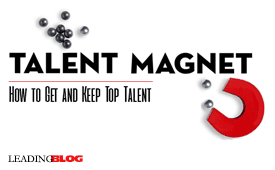 
Posted by Michael McKinney at 11:12 PM
06.01.18

First Look: Leadership Books for June 2018Here's a look at some of the best leadership books to be released in June 2018. Don't miss out on other great new and future releases this month.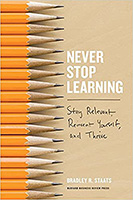 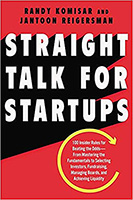 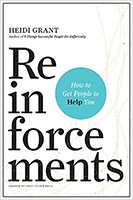 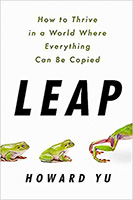 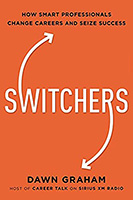
For bulk orders call 1-626-441-2024  Build your leadership library with these specials on over 39 titles. All titles are at least 40% off the list price and are available only in limited quantities. "He that loves a book will never want a faithful friend, a wholesome counselor, a cheerful companion, an effectual comforter. By study, by reading, by thinking, one may innocently divert and pleasantly entertain himself, as in all weathers, as in all fortunes." — Barrow
Posted by Michael McKinney at 08:37 AM
|
BUILD YOUR KNOWLEDGE


How to Do Your Start-Up Right STRAIGHT TALK FOR START-UPS 
Grow Your Leadership Skills NEW AND UPCOMING LEADERSHIP BOOKS 
Leadership Minute BITE-SIZE CONCEPTS YOU CAN CHEW ON 
Classic Leadership Books BOOKS TO READ BEFORE YOU LEAD |
|